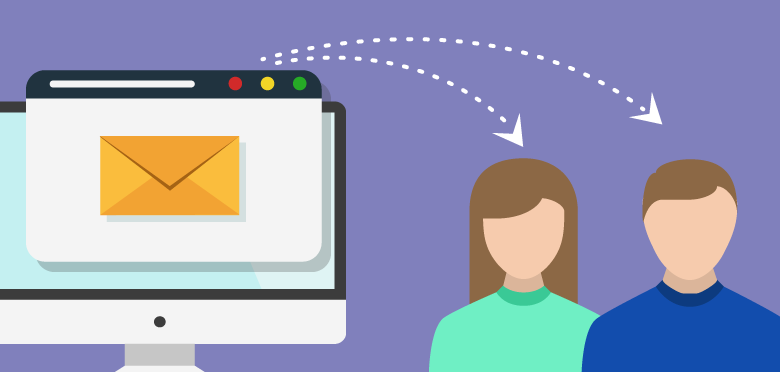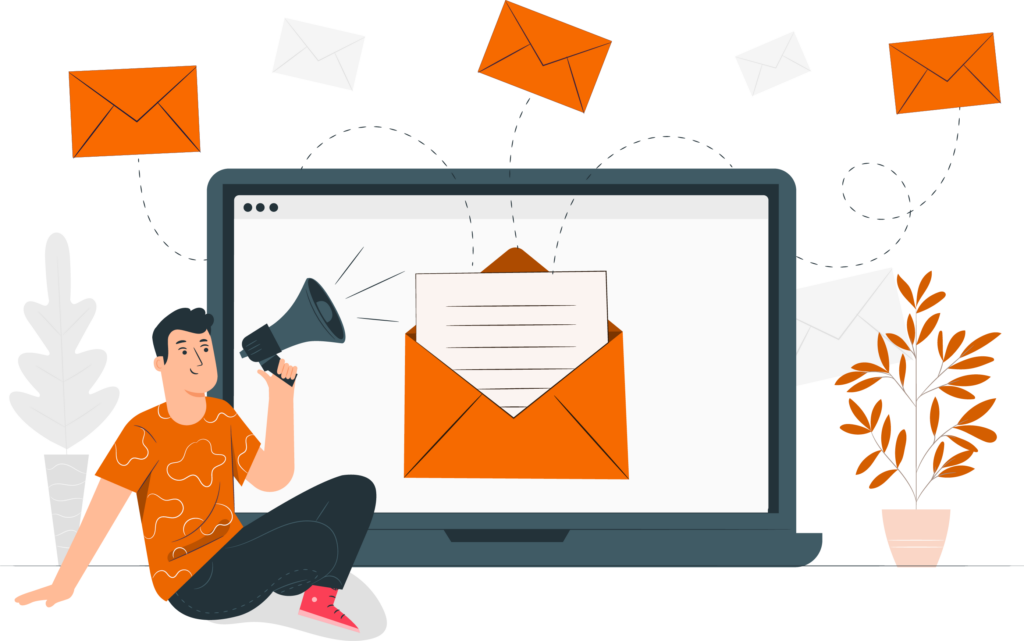
Best Practices for Handling Minors’ Data Under Singapore’s PDPA
September 9, 2025
Account-Based Marketing Best Practices for the Buyer’s Journey
September 9, 2025In the realm of email communication, getting a response from recipients is a crucial aspect of achieving your goals. Whether you’re engaging with potential customers, establishing professional connections, or seeking feedback, a response validates the effectiveness of your message and opens up opportunities for further communication. In this blog post, we will explore the significance of getting a response from email recipients and discuss why it matters in various contexts.

To increase the chances of receiving responses from recipients to your email, here are some effective strategies you can follow:
1. Craft a compelling subject line: The subject line is the first thing recipients see, so make it clear, concise, and engaging. A well-written subject line can entice recipients to open and respond to your email.
Here are some actionable tips to boost your email campaign’s success:
-
Know Your Audience: Understanding your target audience is the foundation of effective subject line creation. Research their preferences, interests, and pain points. Tailor your subject lines to resonate with their needs and desires. Personalization is key – address recipients by name whenever possible to establish a connection and make them feel valued.
-
Be Clear and Concise: In a cluttered inbox, brevity is essential. Keep your subject lines concise, typically between 40-50 characters, to ensure they are fully displayed on various devices. Clearly communicate the value or benefit recipients can expect by opening your email, such as discounts, exclusive offers, or exciting product launches.
-
Create Urgency or Exclusivity: To encourage immediate action, instill a sense of urgency or exclusivity in your subject lines. Use phrases like “Limited Time Offer,” “Exclusive Access,” or “Today Only” to convey a time-sensitive opportunity. Highlight scarcity, limited quantities, or impending deadlines to drive recipients to act swiftly.
-
Invoke Curiosity: Curiosity can be a powerful motivator. Craft subject lines that evoke curiosity and leave recipients wanting more. Consider using intriguing questions, teasing hints, or surprising statements that make recipients eager to discover what’s inside your email. However, strike a balance to ensure the curiosity aligns with your brand and offering.
-
Leverage Social Proof: Human beings are influenced by the actions of others. Incorporate social proof into your subject lines to establish credibility and trust. Mention positive reviews, testimonials, or the number of satisfied customers to build confidence in your brand. For example, “Join Thousands of Happy Customers – See What They Love About Our Products.”
-
Personalize with Product Recommendations: Leverage data about your customers’ purchase history or browsing behavior to personalize subject lines with relevant product recommendations. Use phrases like “Recommended Just for You” or “You Might Also Like” to increase the chances of capturing their interest. Tailored suggestions can enhance engagement and conversions.
-
Experiment and Test: Subject line optimization is an ongoing process. Conduct A/B testing by sending different variations of subject lines to smaller segments of your email list. Analyze open rates, click-through rates, and conversions to identify which approaches resonate best with your audience. Continuously refine and improve your subject lines based on the data-driven insights you gather.
2. Personalize your message: Address recipients by their name and customize the content of your email to make it relevant to their interests or needs. Personalization shows that you value their individuality and increases the likelihood of a response.
Here are some actionable insights to unlock its full potential:
-
Address Recipients by Name: The simplest form of personalization is addressing recipients by their names. Avoid generic greetings and use their names to create an immediate connection. It shows that you value them as individuals and not just as another email recipient. Incorporate their names in subject lines or opening sentences to grab their attention and make a positive first impression.
-
Segment Your Audience: Segmenting your audience allows you to group recipients based on specific characteristics or behaviors, enabling more targeted and relevant messaging. Consider factors like demographics, purchase history, browsing behavior, or engagement level. By segmenting your audience, you can send tailored messages that address their unique needs and interests.
-
Tailor Content to Customer Preferences: Use customer data and segmentation insights to personalize the content of your messages. Showcase products or offers that align with recipients’ past purchases or browsing history. Provide product recommendations based on their preferences or offer relevant content that adds value to their lives. By delivering content that speaks directly to their interests, you can capture their attention and drive conversions.
-
Leverage Dynamic Content: Dynamic content allows you to create email templates with interchangeable components that automatically adjust based on individual recipients’ attributes. This advanced personalization technique enables you to showcase different products, images, or offers based on customer data. For example, displaying a specific product color that a recipient previously showed interest in. Dynamic content adds an extra layer of personalization and enhances the customer experience.
-
Utilize Behavioral Triggers: Leverage customer behavior triggers to send automated, personalized messages at critical moments. For example, if a customer abandons their cart, you can set up automated emails reminding them about the items left behind or even offer a discount to encourage them to complete the purchase. By proactively addressing customer behavior, you can increase conversion rates and drive customer loyalty.
-
Personalize Beyond Emails: Extend personalization beyond emails to other channels, such as website experiences, social media ads, and retargeting campaigns. By using customer data and insights across various touchpoints, you can deliver consistent, personalized experiences that reinforce your brand and deepen customer relationships.
-
Test, Learn, and Iterate: Personalization is an ongoing process of refinement. Continuously test different personalization techniques, messages, and approaches to determine what resonates best with your audience. Monitor key metrics like open rates, click-through rates, and conversions to measure the impact of personalization efforts. Learn from the data and iterate your strategies to continually improve results.

3. Keep it concise and clear: Long, wordy emails can be overwhelming and may discourage recipients from reading or responding. Keep your message focused, clear, and to the point. Use short paragraphs, bullet points, and formatting to enhance readability.
Here are some actionable tips to enhance your communication strategy:
-
Embrace Brevity: In today’s digital landscape, attention spans are shorter than ever. Capture your audience’s attention by getting straight to the point. Avoid unnecessary fluff or lengthy introductions. Craft concise messages that deliver your key value proposition in a succinct and impactful manner. The goal is to convey your message quickly and efficiently, allowing recipients to grasp the main idea at a glance.
-
Focus on the Key Message: Identify the core message you want to convey and prioritize it. What is the most important information or benefit you want your audience to take away? Streamline your communication around this key message, ensuring it remains prominent and clear. Avoid overwhelming recipients with excessive details or multiple messages that dilute the impact of your communication.
-
Use Clear and Simple Language: Avoid jargon, complex terminology, or convoluted sentences that may confuse or alienate your audience. Use plain and accessible language that resonates with your target market. Aim for simplicity and clarity, ensuring that anyone, regardless of their level of expertise, can understand your message easily. Clear communication builds trust and encourages engagement.
-
Break Content into Digestible Chunks: Long paragraphs and dense blocks of text can intimidate readers and discourage engagement. Break your content into smaller, easily digestible chunks. Use bullet points, subheadings, and short paragraphs to improve readability. This approach allows recipients to scan your message quickly and locate the information they find most relevant, increasing the chances of them engaging with your content.
-
Highlight Key Information: Draw attention to crucial information by using formatting techniques such as bold or italicized text, larger fonts, or color variations. By visually emphasizing essential details, you ensure they stand out amidst the rest of your content. This technique helps busy recipients quickly grasp the main points you want to convey, even when they’re scanning your message.
-
Use Visuals Wisely: Visuals can enhance comprehension and make your message more engaging. Incorporate relevant images, infographics, or videos to support and complement your content. Visual elements help break up the text, provide visual interest, and convey information more efficiently. However, ensure that visuals align with your brand identity and do not overshadow the clarity of your message.
-
Provide Clear Calls to Action: Direct your audience on what action to take next by incorporating clear calls to action (CTAs). Whether it’s making a purchase, signing up for a newsletter, or exploring a new product line, make your CTAs concise, prominent, and compelling. Use action-oriented language and ensure recipients understand the benefits or value they will gain by taking that specific action.
-
Proofread and Edit: Before sending any communication, carefully proofread and edit your content. Correct any grammatical errors, typos, or inconsistencies. Ensure that your message flows smoothly and remains coherent. Sloppy or unclear communication can erode trust and credibility. Take the time to review your content meticulously to present a polished and professional image.

4. Use a polite and professional tone: Write your email in a friendly yet professional manner. Be polite, respectful, and avoid using aggressive or demanding language. A positive and courteous tone encourages recipients to respond in kind.
Here are some actionable tips to help you create effective and engaging communication:
-
Establish a Friendly Demeanor: Politeness is the foundation of positive customer interactions. Begin by addressing your audience with a warm and friendly tone. Avoid being overly formal or impersonal, as it can create a barrier between you and your customers. Instead, strive to cultivate a conversational tone that feels approachable and relatable.
-
Use Courteous Language: Politeness goes hand in hand with the use of courteous language. Choose words and phrases that demonstrate respect and consideration. Employ polite expressions such as “please,” “thank you,” and “you’re welcome” to convey your appreciation and to make recipients feel valued. Polite language creates a positive impression and encourages a favorable response.
-
Be Empathetic and Understanding: Recognize that customers may have concerns, questions, or issues. Adopt an empathetic and understanding tone to acknowledge their needs. Respond promptly to inquiries and address any concerns with patience and care. Empathy helps build trust and shows that you genuinely care about providing a positive experience for your customers.
-
Maintain Professionalism: While being polite, it is important to maintain a professional tone throughout your communications. Strive for a balance between friendliness and professionalism to project credibility and competence. Use proper grammar, avoid slang or inappropriate language, and adhere to professional standards in your industry. Professionalism instills confidence in your brand and assures customers that you are reliable.
-
Focus on Customer Benefits: In your advertising messages, emphasize the benefits that customers will gain from your products or services. Frame your communication in terms of how it can solve their problems, meet their needs, or enhance their lives. By focusing on customer benefits, you show that your primary concern is their satisfaction and success.
-
Handle Dissatisfaction with Grace: Inevitably, you may encounter dissatisfied customers. When responding to complaints or negative feedback, maintain a polite and professional tone. Avoid becoming defensive or confrontational. Instead, demonstrate your willingness to address their concerns and find a satisfactory resolution. Handling dissatisfaction with grace can turn a negative experience into a positive one, leaving a lasting impression on customers.

5. Ask specific questions or provide clear calls to action: If you want a response, make it easy for recipients by asking specific questions or including clear calls to action. This helps guide them on how to respond and increases the likelihood of getting the desired information.
Here are some actionable tips to optimize your communication strategy:
-
Prompt Action with Clear CTAs: A well-crafted call to action is vital in guiding your audience towards the desired action. Make your CTAs prominent, concise, and action-oriented. Use active verbs to clearly communicate what you want recipients to do. Whether it’s “Shop Now,” “Subscribe for Updates,” or “Get Your Discount,” ensure that the CTA is visible and stands out in your messaging. Clear CTAs provide a direct pathway for customers to engage with your brand.
-
Ask Thought-Provoking Questions: Asking specific questions in your ecommerce advertising can spark curiosity and encourage engagement. Craft questions that are relevant to your audience’s needs or pain points. For instance, if you offer beauty products, you could ask, “Struggling with Dry Skin? Discover Our Hydrating Skincare Solutions.” Thought-provoking questions trigger recipients to reflect on their own situation and seek solutions, leading them to engage with your brand.
-
Encourage Feedback and Reviews: Engaging your audience goes beyond sales and promotions. Encourage customers to provide feedback or leave reviews about their experiences with your products or services. Incorporate specific questions that invite them to share their thoughts, such as “How did our product enhance your daily routine?” or “What do you love most about your recent purchase?” Feedback and reviews not only provide valuable insights but also contribute to social proof, building trust and credibility.
-
Leverage Social Media Interactions: Integrate your ecommerce advertising with social media platforms by including specific questions or CTAs that encourage audience participation on those channels. For instance, you could ask recipients to share their favorite products on social media using a branded hashtag or participate in a contest by tagging friends in the comments. This approach expands your reach and encourages user-generated content, creating a sense of community and fostering engagement.
-
A/B Test for Optimization: To maximize the effectiveness of your questions and CTAs, conduct A/B testing. Test different variations of your questions or CTAs with a subset of your audience to measure which ones generate higher engagement or conversion rates. Analyze the results and iterate based on the insights gained, continuously refining your messaging to improve performance.
-
Monitor and Respond: Once you’ve implemented specific questions or clear CTAs in your ecommerce advertising, closely monitor the responses and interactions. Promptly respond to inquiries, comments, or feedback to demonstrate your attentiveness and commitment to customer satisfaction. Engaging in meaningful conversations fosters customer loyalty and helps to build a positive brand reputation.
6. Follow up appropriately: If you haven’t received a response within a reasonable time frame, consider sending a polite follow-up email as a gentle reminder. Be mindful not to be overly persistent or pushy, as that can have the opposite effect.
Here are the actionable tips to help you enhance customer engagement and drive results:
-
Acknowledge Customer Actions: When a customer takes a specific action, such as signing up for a newsletter, making a purchase, or abandoning a cart, it is crucial to acknowledge their action promptly. Send an automated confirmation email or message that thanks them for their engagement and provides any necessary next steps. This simple act of acknowledgement makes customers feel valued and encourages them to further engage with your brand.
-
Personalize Your Follow-Up Communications: Generic follow-up messages can feel impersonal and diminish the customer experience. Whenever possible, personalize your follow-up communications to make them more relevant and engaging. Address customers by their name, reference their specific actions or purchases, and tailor the content based on their preferences or interests. Personalization demonstrates your attentiveness and helps build a stronger connection with your audience.
-
Provide Relevant Information and Recommendations: In your follow-up communications, offer valuable information, recommendations, or related products that align with the customer’s interests or previous purchases. For example, if a customer recently bought a smartphone, you could follow up with an email suggesting compatible accessories or useful tips for maximizing their device’s features. Providing relevant and helpful content shows your commitment to customer satisfaction and positions your brand as a trusted resource.
-
Utilize Automated Email Sequences: Automated email sequences are an efficient way to follow up with customers at different stages of their journey. Set up triggered emails based on specific actions or events, such as abandoned carts, post-purchase thank you emails, or product recommendations. These sequences can be personalized and timed strategically to keep your brand top of mind and guide customers toward their desired outcome.
-
Respond to Inquiries and Support Requests: Timely and responsive customer support is vital for maintaining customer satisfaction. When customers reach out with inquiries or support requests, make it a priority to respond promptly and efficiently. Whether through email, live chat, or social media, provide clear and helpful answers to their questions or concerns. Swift and effective support builds trust and fosters long-term customer loyalty.
-
Implement Retargeting Strategies: Retargeting is a powerful technique to re-engage customers who have shown interest in your products or services. Use targeted ads or personalized emails to remind them of their previous interactions or showcase new offerings that align with their preferences. Retargeting can help rekindle their interest, increase brand recall, and encourage conversions.
7. Use proper email etiquette: Ensure your email follows standard email etiquette. Use proper grammar, spelling, and punctuation. Avoid using excessive capitalization or exclamation marks, as they can come across as unprofessional or aggressive.
Use these actionable tips to help you enhance your communication strategy:
-
Start with a Polite and Professional Greeting: Begin your email with a polite and professional greeting. Address the recipient by name if possible or use a general salutation such as “Hello” or “Dear Customer.” This establishes a positive tone and sets the stage for a respectful conversation.
-
Use a Clear and Descriptive Subject Line: Craft a subject line that accurately reflects the content of your email and grabs the recipient’s attention. A clear and descriptive subject line helps recipients understand the purpose of your message and increases the likelihood of them opening it. Avoid using clickbait or misleading subject lines that can erode trust.
-
Use Proper Grammar, Spelling, and Punctuation: Ensure your emails are free from grammatical errors, spelling mistakes, and punctuation errors. Proofread your emails before sending them to maintain a professional image. Incorrect grammar or spelling can create a negative impression and undermine the credibility of your brand.
-
Be Mindful of Tone and Language: Choose your words carefully to maintain a polite and professional tone throughout the email. Avoid using slang, jargon, or offensive language that may alienate or confuse recipients. Be respectful, courteous, and empathetic in your language choices to foster a positive and lasting impression.
-
Respect Privacy and Opt-Out Requests: Respect the privacy of your recipients and adhere to data protection regulations. Include a clear unsubscribe or opt-out option in your emails and honor any requests promptly. Being transparent and respecting privacy preferences fosters trust and ensures compliance with legal requirements.
-
Follow up Appropriately: After sending an email, be mindful of appropriate follow-up protocols. If you don’t receive a response, wait a reasonable amount of time before sending a gentle follow-up email. Respect the recipient’s time and avoid being overly pushy or aggressive in your follow-up communications.

8. Use a professional email signature: Include a professional email signature at the end of your message. It should typically include your name, job title, contact information, and any relevant links to your website or social media profiles. A well-crafted signature adds credibility and makes it easier for recipients to reach out to you.
Here are some actionable tips to help you create a signature that stands out.
-
Showcase Brand Consistency: Your email signature is an extension of your brand identity. By incorporating your brand colors, logo, or tagline, you create a cohesive and consistent visual experience for recipients. Consistency across all touchpoints reinforces brand recognition and helps establish your brand in the minds of your audience.
-
Include Essential Contact Information: A professional email signature should include essential contact details to facilitate further communication. Include your full name, job title, company name, and direct contact information such as phone number and email address. This makes it easier for recipients to reach out to you and reinforces the legitimacy of your business.
-
Add Relevant Social Media Links: Incorporating links to your social media profiles in your email signature can drive engagement and expand your online presence. Choose the social media platforms that align with your ecommerce strategy and include icons or hyperlinks to make it convenient for recipients to connect with you on their preferred platforms.
-
Update Your Signature Regularly: Keep your email signature up to date to reflect any changes in your contact information, job title, or branding. Outdated or incorrect information can create confusion and hinder effective communication. Regularly review your email signature to ensure it aligns with your current brand image and provides accurate contact details.
-
Maintain Professionalism: Above all, maintain a professional tone throughout your email signature. Avoid using informal language, emojis, or unnecessary personal quotes. Your email signature should align with your brand’s tone and convey a sense of professionalism and credibility.
9. Timing matters: Consider the timing of your email. Sending it during business hours, when recipients are more likely to be actively checking their email, can increase the chances of getting a prompt response. Avoid sending emails during weekends or holidays when people may be away or less responsive.
These are some actionable tips to help you make the most of this crucial element:
-
Seasonal Relevance: One of the key factors to consider in ecommerce advertising is the seasonality of your products or services. Aligning your marketing efforts with relevant seasons, holidays, or events can significantly boost engagement and conversions. Plan your campaigns in advance and ensure your messaging reflects the specific season or occasion to resonate with your target audience.
-
Day of the Week: Choosing the right day of the week to launch your ecommerce advertising initiatives can have a significant impact on their success. Analyze your target audience and their behavior patterns to identify the days when they are most active and responsive. For instance, B2B campaigns might perform better on weekdays, while B2C campaigns could have higher engagement during weekends or specific evenings.
-
Time of Day: Just as the day of the week matters, the time of day when you communicate with your audience can influence their receptiveness. Consider the habits and routines of your target audience to determine the optimal time for sending emails, posting on social media, or launching ad campaigns. A/B testing can help identify the time slots that generate the highest open rates, click-through rates, and conversions.
-
Customer Journey Stage: Understanding the different stages of the customer journey is crucial in timing your ecommerce advertising efforts. Tailor your messages to align with each stage, whether it’s building awareness, nurturing leads, or driving conversions. For example, early in the customer journey, focus on educational content, while closer to the conversion stage, emphasize incentives or limited-time offers to encourage action.
-
Real-Time Triggers: Incorporate real-time triggers into your ecommerce advertising strategy to create a sense of urgency and relevancy. For example, sending abandoned cart reminders shortly after a customer leaves your website, or triggering personalized offers based on recent browsing behavior, can motivate customers to take immediate action. By capitalizing on real-time triggers, you maximize the chances of conversions.
-
Time Zone Considerations: If your ecommerce business operates in multiple time zones, be mindful of the differences when scheduling your advertising activities. Segment your audience based on their respective time zones to ensure your messages are delivered at appropriate times. This level of personalization demonstrates your commitment to catering to their needs and enhances the customer experience.
-1.webp)
10. Build rapport and establish a connection: If you have prior communication or a mutual connection with the recipient, mention it briefly in your email. Building rapport or establishing a connection can make your email stand out and increase the likelihood of a response.
Here are some actionable strategies to help you foster rapport and connection in your ecommerce advertising campaigns.
-
Humanize Your Brand: To establish a connection, humanize your brand by showcasing the people behind it. Introduce your team members, share their stories, and highlight their expertise. Use authentic and relatable language in your communications to create a friendly and approachable tone. By adding a human touch to your brand, you cultivate trust and build a sense of familiarity with your audience.
-
Storytelling: Storytelling is a powerful tool for creating an emotional connection with your audience. Craft compelling narratives that illustrate how your products or services have positively impacted customers’ lives. Share customer success stories or anecdotes that demonstrate the value and benefits of your offerings. When people can relate to the experiences shared, they are more likely to connect with your brand on an emotional level.
-
Provide Value through Content: Create and share high-quality content that educates, entertains, or solves problems for your audience. Whether it’s blog posts, videos, or tutorials, focus on providing value rather than purely promoting your products. When you consistently deliver valuable content, you position your brand as a trusted resource, earning the loyalty and respect of your audience.
-
Social Proof: Leverage social proof to establish credibility and build trust. Display customer reviews, ratings, and testimonials on your website and in your marketing materials. Highlight any accolades, awards, or industry recognition your brand has received. Social proof acts as validation for potential customers, reassuring them that they are making the right choice by choosing your brand.
-
Be Transparent and Authentic: Transparency and authenticity are crucial in building rapport. Be open and honest about your products, pricing, and policies. Avoid deceptive marketing tactics or false claims. Admit and rectify mistakes when they occur. Authenticity builds trust and fosters long-term relationships with your customers.
-
Stay Consistent across Channels: Consistency in your brand messaging and visuals across different channels is essential to reinforce the connection with your audience. Whether it’s your website, social media profiles, or email communications, maintain a cohesive brand identity. Consistency creates familiarity, making it easier for customers to recognize and connect with your brand.
-
Show Appreciation: Finally, show appreciation for your customers’ support and loyalty. Offer exclusive discounts, special offers, or loyalty programs to reward repeat customers. Express gratitude through personalized thank-you messages or small gestures. When customers feel appreciated, they are more likely to develop a strong connection with your brand.
Remember that not all recipients will respond to every email, as various factors can influence their decision. However, by implementing these strategies, you can improve your chances of receiving responses and engaging in meaningful conversations.
Check this out: https://www.ismartcom.com/ecommerce-advertising-performance-marketing-singapore-asia


